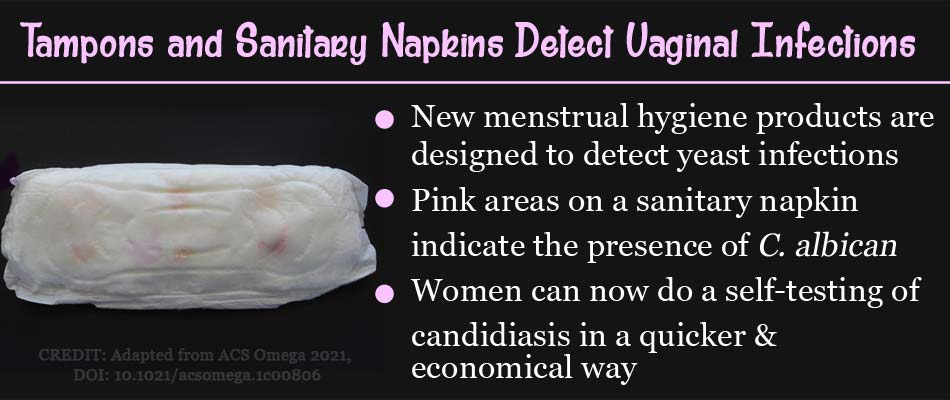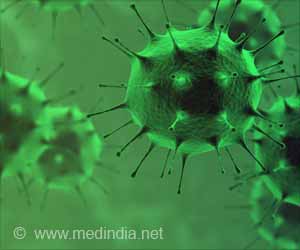in women. The most common symptoms are itching, inflammation, irritation, and
.
According to the Mayo Clinic, about 75% of women will experience a yeast infection, or vulvovaginal candidiasis, at least once in their lifetime.
How Were They Prepared?
Women belonging to developing countries face a lack of healthcare facilities to diagnose and manage infectious genito-urinary tract diseases. In addition, societal taboos also restrict them from getting diagnosed and treated for such diseases.
With these things in mind, the new smart menstrual hygiene products developed by Indian researchers contain ordinary substances designed with the motive of arriving at self-testing devices for vaginal infections.
The researchers started with common store-bought multifilament cotton threads. A chemical-based wash with heptane, an organic compound, was given for the threads to get rid of all the waxes and binders added during manufacturing. This further increased their absorbent properties and made them ready to become complete menstrual hygiene products.
Here’s How They Got Tested
The researchers aimed to design the products so they can facilitate self-diagnosis of vaginal candidiasis on their own. The concept behind their design is a simple chemical reaction.
The threads devoid of wax and binders were then coated with a molecule called L-proline β-naphthylamide, a molecule that binds with the enzyme produced by Candida albicans. These specially coated threads were then embedded in specific places within the inner layers of common tampons and sanitary napkins.
When a solution that mimics vaginal fluid containing C.albicans and an indicator solution is added to the products, bright pink color spots were observed where the specially coated threads were located.
There are two important features that make these products unique.
- One is the minimum time required to carry out the detection (only about ten minutes), and
- the other one is economic feasibility, as it costs only 22 to 28 cents per napkin or tampon.
The researchers further said that it could easily be adapted to simultaneously detect other pathogens, such as bacteria that also can cause urinary tract infections in the paper published in the journal ACS Omega.
Simple Tips to Prevent Yeast Infections
-
Wear breathable (cotton) underwear - Use unscented products and gentle cleansers
- Don’t douche. Douching (the process of rinsing the vagina with a liquid) kills the good bacteria in the vagina that prevent infections
Reference:
-
Anusha Prabhu, Hardik Singhal, M. S. GiriNandagopal, Reshma Kulal, Prakash PeralamYegneswaran, and Naresh Kumar Mani, ACS Omega 2021 6 (19), 12667-12675 DOI: 10.1021/acsomega.1c00806
Source: Medindia



